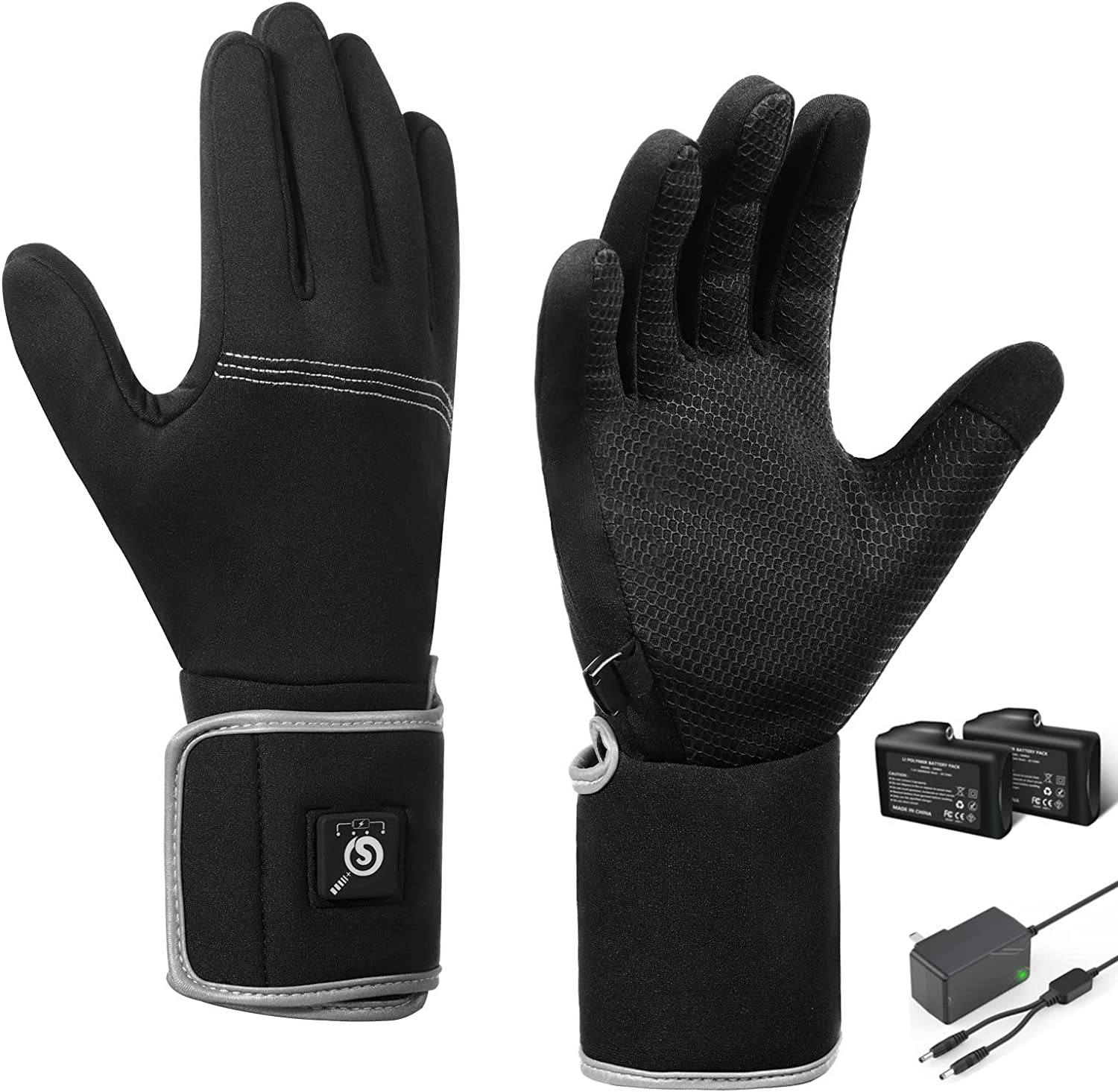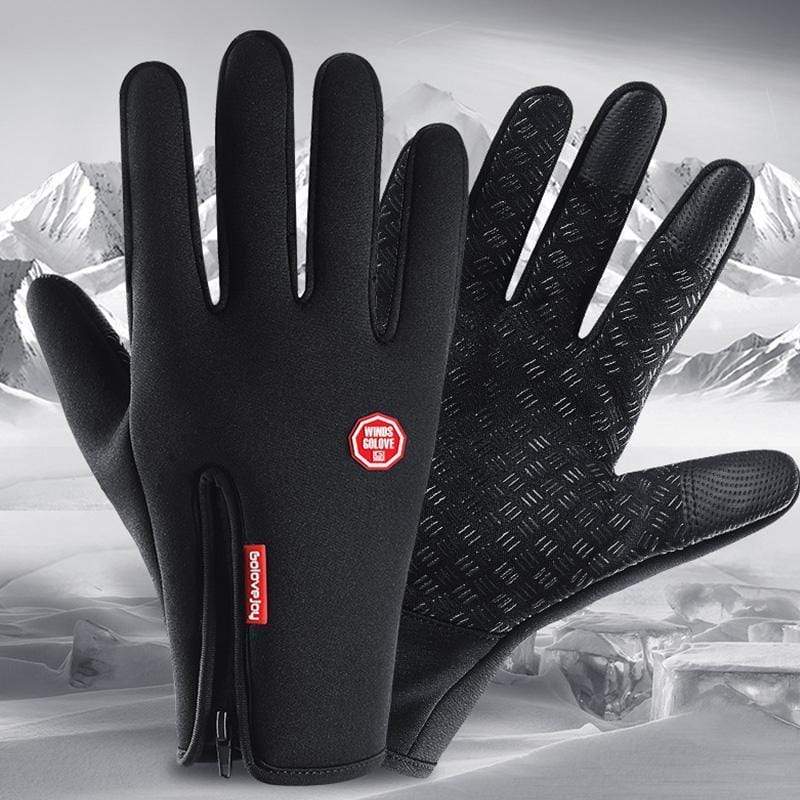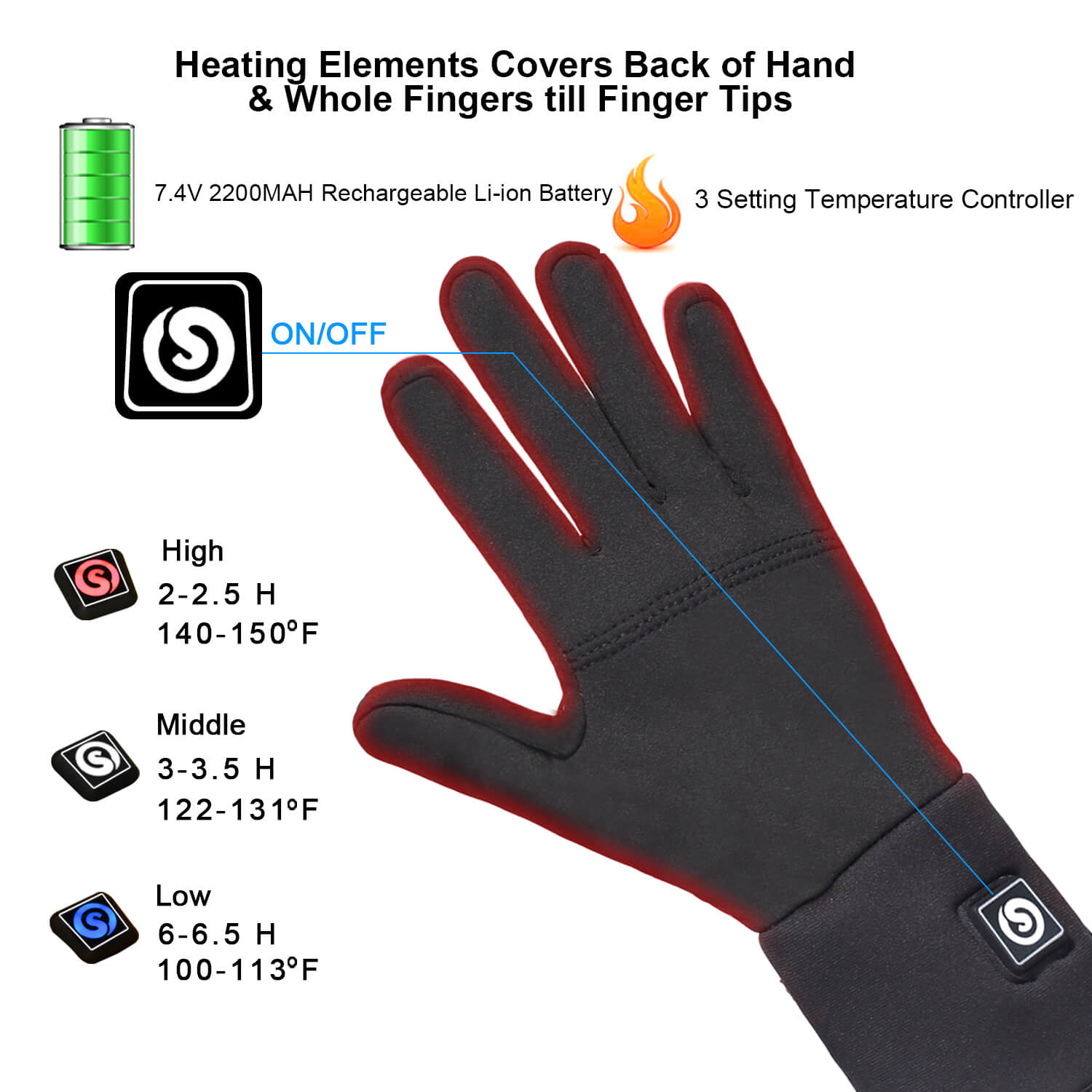How to Choose the Perfect Pair of Gloves that Really Keep Your Hands Warm
When shopping for gloves that really keep your hands warm, there are several factors to consider to ensure optimal warmth and comfort. First, evaluate the insulation material, as this plays a crucial role in maintaining hand temperature. Common insulation materials include down, synthetic insulators, and fleece, each with its unique advantages and disadvantages.
Down is a natural insulator derived from duck or goose feathers, offering excellent warmth-to-weight ratio and compressibility. However, down loses its insulating properties when wet, making it less suitable for damp or snowy conditions. Synthetic insulators, on the other hand, maintain their warmth even when wet and are generally more affordable than down. Fleece is a popular choice for lightweight, breathable insulation, but it may not provide as much warmth as down or synthetic insulators.
Glove thickness is another essential factor to consider. Thicker gloves typically offer more warmth but may sacrifice dexterity and comfort. For activities requiring manual dexterity, such as skiing or snowboarding, consider gloves with a slimmer profile. For extreme cold or sedentary activities, thicker gloves or mittens may be more appropriate.
Waterproofing is vital for maintaining hand warmth, especially in wet or snowy conditions. Look for gloves with waterproof membranes, such as Gore-Tex or Hipora, which prevent water from seeping in while allowing perspiration to escape. Additionally, consider gloves with a durable water repellent (DWR) finish, which further enhances water resistance.
Lastly, ensure a proper fit for your gloves that really keep your hands warm. A snug yet comfortable fit is crucial for maintaining warmth and dexterity. To determine your hand size, measure the circumference of your dominant hand around the knuckles, excluding the thumb. Use this measurement to select the appropriate glove size according to the manufacturer’s guidelines.
Spotlight on Highly-Rated Warm Hand Gloves
When searching for gloves that really keep your hands warm, it’s essential to consider top-rated products known for their warmth and performance. This section highlights several highly-rated gloves, each offering unique features and benefits tailored to various activities and conditions.
North Face Etip Gloves
The North Face Etip Gloves are designed for outdoor enthusiasts who require touchscreen compatibility without sacrificing warmth. These gloves feature a five-finger conductive design, allowing users to operate smartphones and other devices with ease. The Etip gloves are made with a breathable, moisture-wicking fabric and are equipped with a fleece lining for added warmth. The exterior shell is made with a durable, wind-resistant material to protect hands from cold gusts.
Heat 3 Smart Gloves
For those seeking advanced warmth technology, the Heat 3 Smart Gloves are an excellent choice. These gloves incorporate rechargeable battery-powered heating elements, providing adjustable warmth levels at the touch of a button. The Heat 3 Smart Gloves are waterproof and windproof, making them suitable for snow sports and other winter activities. With a durable construction and touchscreen compatibility, these gloves offer a versatile solution for maintaining hand warmth.
SealSkinz Waterproof All-Weather Gloves
The SealSkinz Waterproof All-Weather Gloves are designed for those who require reliable hand protection in wet and snowy conditions. These gloves feature a three-layer construction, combining a waterproof membrane, a warm fleece lining, and a durable outer shell. The SealSkinz gloves offer excellent dexterity, making them suitable for activities such as hiking, cycling, and fishing in cold, wet environments.
Delving Deeper into Insulation Materials
When searching for gloves that really keep your hands warm, understanding the various insulation materials is crucial. Each material offers unique advantages and disadvantages, making certain options more suitable for specific activities and conditions. Here, we delve into the differences between down, synthetic insulators, and fleece.
Down Insulation
Down insulation, derived from duck or goose feathers, is a popular choice for its warmth-to-weight ratio and compressibility. Down is highly efficient at trapping heat, making it an excellent option for cold, dry conditions. However, down loses its insulating properties when wet, which can lead to rapid heat loss. As a result, down-insulated gloves are best suited for dry, cold environments.
Synthetic Insulators
Synthetic insulators, such as polyester or nylon, are designed to mimic the properties of down while maintaining performance in damp conditions. These materials retain warmth even when wet, making them a more versatile option for various weather conditions. Synthetic insulators are generally more affordable than down and can be easily compressed for storage. However, they may not provide the same level of warmth-to-weight ratio as down.
Fleece Insulation
Fleece is a popular choice for lightweight, breathable insulation. This material is quick-drying, moisture-wicking, and offers excellent breathability. Fleece gloves are best suited for milder temperatures or activities that require manual dexterity, as they tend to provide less warmth than down or synthetic insulators. Fleece gloves can also be used as a base layer in a thermal layering system, providing an additional layer of insulation and moisture management.
When selecting gloves that really keep your hands warm, consider the insulation material’s properties and the specific activities and conditions for which the gloves will be used. For extreme cold or dry conditions, down-insulated gloves may be the best choice. For versatility in various weather conditions, synthetic insulators are a suitable option. For lightweight, breathable insulation, fleece gloves are an excellent choice.
Maximizing Warmth with Thermal Layering
An innovative approach to maintaining hand warmth in cold weather is thermal layering. By combining different types of gloves, you can achieve optimal insulation, moisture management, and dexterity. This method is particularly effective for activities that expose your hands to varying temperatures and conditions.
Glove Liners
Glove liners are thin, lightweight gloves that provide an additional layer of insulation against the cold. Designed to fit snugly against your skin, glove liners are typically made from materials such as silk, polyester, or merino wool. These materials offer excellent moisture-wicking properties, drawing perspiration away from your skin and keeping your hands dry. Glove liners can also be worn independently in milder temperatures, making them a versatile addition to your hand protection system.
Fleece Gloves
Fleece gloves offer a step up in warmth from glove liners, providing an additional layer of insulation between your skin and the outer glove. Fleece is a popular choice due to its breathability, moisture-wicking properties, and quick-drying capabilities. When combined with a waterproof and insulated outer glove, fleece gloves create an effective thermal layering system that maintains hand warmth and dryness in cold, wet conditions.
Insulated Mittens
Insulated mittens are an excellent option for extreme cold or sedentary activities, as they offer superior warmth compared to gloves. By keeping your fingers together, mittens reduce the surface area exposed to the cold, allowing your hands to retain more heat. Many insulated mittens are designed with a removable inner liner, allowing you to customize the level of insulation based on the conditions. When paired with glove liners and an outer waterproof glove, insulated mittens create a highly effective thermal layering system.
When selecting gloves that really keep your hands warm, consider implementing thermal layering to maximize warmth and versatility. By combining glove liners, fleece gloves, and insulated mittens, you can create a customized hand protection system tailored to your specific needs and activities.
The Role of Waterproofing in Keeping Hands Warm
An essential feature to consider when searching for gloves that really keep your hands warm is waterproofing. Waterproof gloves are crucial for maintaining hand warmth, especially in wet or snowy conditions. By preventing moisture from entering the glove, waterproof materials help preserve insulation performance and prevent heat loss.
Waterproofing Technologies and Materials
Various waterproofing technologies and materials are used in gloves to ensure hand warmth and dryness. Two popular options are Gore-Tex and Hipora:
- Gore-Tex: A well-known waterproof membrane, Gore-Tex is designed to allow perspiration to escape while preventing water from entering. This breathable material ensures hands stay dry and warm, even during intense activities. Gore-Tex gloves often include a DWR (durable water repellent) finish, which further enhances water resistance.
- Hipora: Another popular waterproof material, Hipora, is a three-layer, microporous structure that provides excellent breathability and waterproofing. Hipora-lined gloves are suitable for various activities, including winter sports, hiking, and cycling, offering reliable hand protection in cold, wet conditions.
Selecting Waterproof Gloves
When choosing waterproof gloves, consider the following factors:
- Activity: Select gloves designed for your specific activity or sport, as these will offer the best combination of waterproofing, insulation, and dexterity.
- Waterproof Rating: Check the glove’s waterproof rating, which indicates the level of water resistance. Higher ratings correspond to greater waterproof performance.
- Breathability: Ensure the gloves offer adequate breathability to prevent excessive perspiration buildup, which can lead to cold, clammy hands.
- Durability: Opt for gloves made from high-quality materials and construction techniques to ensure long-lasting waterproof performance.
By prioritizing waterproofing in your search for gloves that really keep your hands warm, you can maintain hand warmth and dryness, even in the most challenging weather conditions.
Finding the Perfect Fit: Ensuring Comfort and Warmth
A proper fit is crucial when selecting gloves that really keep your hands warm, as an ill-fitting glove can lead to reduced warmth, discomfort, and decreased dexterity. To ensure a snug yet comfortable fit, follow these guidelines:
Measuring Hand Size
To determine your hand size, measure the circumference of your dominant hand around the knuckles, excluding the thumb. Compare your measurement to glove size charts provided by manufacturers to find the best fit.
Tips for Achieving a Snug Fit
- Choose gloves with adjustable wrist closures or cuffs, which allow you to customize the fit and prevent cold air from entering.
- opt for gloves with a secure closure system, such as a Velcro strap or drawcord, to prevent the glove from slipping off during use.
- Ensure there is enough room in the fingertips to allow for natural finger movement and dexterity. Gloves that are too tight in this area can restrict blood flow and lead to cold hands.
Consequences of an Ill-Fitting Glove
An ill-fitting glove can negatively impact hand warmth and overall comfort. A glove that is too large may allow cold air to enter, reducing insulation performance. Conversely, a glove that is too small can restrict blood flow, leading to cold hands and reduced dexterity. In some cases, an ill-fitting glove may even cause blisters or discomfort due to excessive rubbing or pressure points.
By prioritizing fit when selecting gloves that really keep your hands warm, you can ensure optimal warmth, comfort, and dexterity during your cold-weather activities.
Additional Features to Consider for Extra Warmth
When searching for gloves that really keep your hands warm, consider several additional features that can enhance warmth and contribute to overall hand comfort. These features include wrist closures, touchscreen compatibility, and nose wipes.
Wrist Closures
Wrist closures, such as Velcro straps or drawcords, provide a customizable fit and help prevent cold air from entering the glove. By securing the gloves around your wrist, you can maintain a consistent level of warmth and insulation, even during vigorous activities.
Touchscreen Compatibility
Touchscreen-compatible gloves allow you to use smartphones and other devices without exposing your hands to the cold. These gloves typically feature conductive materials on the fingertips, enabling you to interact with touchscreens while keeping your hands warm and protected.
Nose Wipes
Some gloves come equipped with integrated nose wipes, which can be particularly useful in cold, dry conditions. These wipes, often found on the thumb area of the glove, allow you to discreetly and hygienically address a runny nose without removing your gloves or exposing your hands to the cold.
By considering these additional features when selecting gloves that really keep your hands warm, you can enhance your overall user experience and ensure that your hands stay warm and comfortable in various cold-weather conditions.
Maintaining Your Warm Hand Gloves: Care and Cleaning Tips
Proper care and maintenance can significantly extend the lifespan and performance of gloves that really keep your hands warm. By following these guidelines, you can ensure your gloves remain in optimal condition and continue to provide warmth and comfort in cold weather.
Proper Storage
- Store gloves in a cool, dry place away from direct sunlight to prevent damage and maintain insulation performance.
- Hang or fold gloves neatly to avoid creasing or misshaping the materials, which can reduce their effectiveness and lifespan.
Washing Techniques
- Hand wash gloves using mild, non-abrasive detergent and lukewarm water to remove dirt and odors without damaging the materials or insulation.
- Avoid using washing machines or dryers, as these can cause excessive wear, shrinkage, or damage to the gloves.
- Rinse gloves thoroughly and gently squeeze out excess water, being careful not to wring or twist the materials.
Drying Methods
- Lay gloves flat or hang them to air dry, ensuring they are thoroughly dried before storing or using them again.
- Avoid exposing gloves to direct heat sources, such as radiators, hair dryers, or sunlight, as this can cause damage or reduce insulation performance.
By following these care and cleaning tips, you can maintain the warmth and functionality of your gloves, ensuring they continue to provide optimal hand protection in cold weather conditions.








